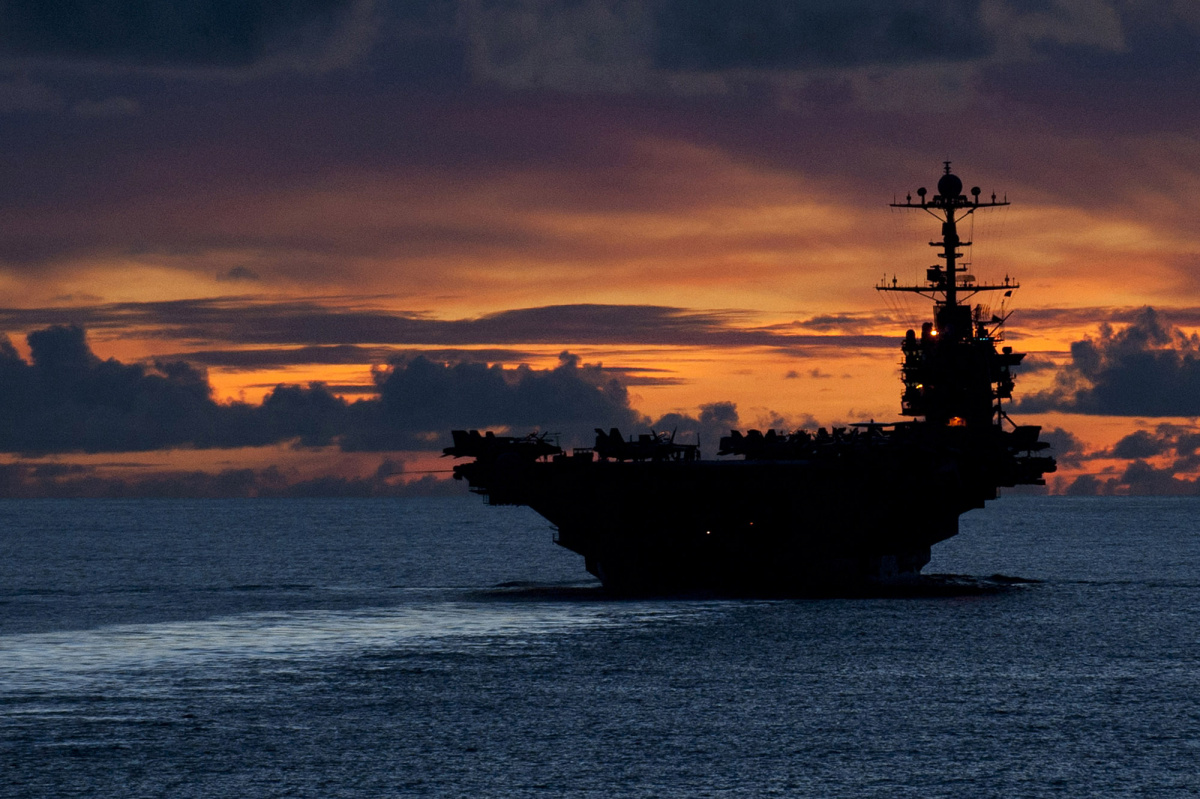Little has been reported on the very last leg of diplomacy in the wake of Trump’s historic Asia trip. It was on Sunday when leaders of America, Japan, Australia, and India sat down to discuss a concept that had first been raised in 2007. It is called Indo-Pacific and meant to coordinate the large democratic powers around the Indian and Pacific Oceans in their efforts to uphold rules-based order and observe international law.
All this grandiosity of words is simple code for China containment. One doesn’t need to be a sage. The references to freedom of navigation and overflight were made in the context of China starting to put restrictions on traffic in the South China Sea. Ever since TPP collapsed, it has been Shinzo Abe in particular eager to find a replacement. As it emerges, he has decided to hang his hat on the Indo-Pacific alliance and push others to follow suit.
Tokyo suffers an immediate consequence of China’s regional preeminence. The South China Sea is not only a key trade route for China. Most of Japan’s carbohydrate imports get shipped through there as well. It has always been a strategic bottleneck and will be even more so in the future. The rest is simple… Align other democracies in the region that are either close to America, like Australia, or that have their own beef with China, like India.
However, the proposition isn’t as easy as it looks on the surface. To be sure, America is in full support of Japan as its ultimate ally in Asia, apart from the fact that TPP was a no-no and probably destroyed the notion of tying ASEAN toward a more balanced equilibrium of powers in the region. Trump self-righteously propagating America First must have spooked ASEAN leaders and pushed them further into Beijing’s arms.
Trump may have sold his trip as a story of success at home, landing a few billion worth of business deals for US companies and workers. But if you think about it, with regard to the American pivot in the region he has failed miserably, to the extent that China doesn’t even have to do anything to achieve its objectives. Trump has managed to alienate pretty much every potential ally in this fight against Beijing’s coming hegemony.
Brings us to Australia… As a key member of TPP and a historical ally of America, it is an obvious go-to country for the Indo-Pacific idea. But when it comes to using such an alliance against China, why would the government in Canberra take sides? Australia is a major beneficiary of trade with China and will certainly be in the future. To be seen in a confrontative position cannot be in the interest of the Southern Continent.
India holds an equally ambivalent position. To be sure, Delhi cannot tolerate China’s evident encirclement of its country. Relations with Pakistan are growing, as in infrastructure being built to connect China with the Indian Ocean. The Gwadar port has been leased and will be built out. China also secured a port foothold in Sri Lanka on the southern tip of India. And Myanmar-Chinese rapprochement has been advancing.
Border disputes in the north are another thorn in India’s side. Delhi’s apprehension is perfectly justified. And still, prime minister Modi has been hesitant to commit to anything as yet. To him, these Indo-Pacific exchanges are consultations at best. Trump’s lingo and recent advances towards India have been met with suspicion. Is America a long-term reliable partner, or does it only want to sell weapons and shale oil?
And to visibly turn against China is a massive statement for India. The two powers don’t see eye-to-eye, but Modi must understand that Eurasia will be entirely transformed if China’s Road and Belt is to become reality. India with its ever-growing population can hardly miss out on economic opportunities such developments would present. Risking all that for a few barrels of American shale oil? And weapons India can also buy from Russia.
To make sure India remains in the fold of the Eurasia vision Vladimir Putin has in the past 12 months reached out to Modi on several occasions, and we shouldn’t be surprised if Putin has acted as an intermediary between Modi and Xi. Putin’s foresight of what Eurasia can become isn’t just complementary with Beijing’s new Silk Road. It goes further and very much considers the integration of the Sub-continent and the Middle East.
And so, Putin helped organise a similar meeting as the Indo-Pacific one in Manila on Sunday, only with different protagonists. The foreign ministers of Russia, India, and China will be gathering for talks in Delhi, which are so far envisaged to take place in the second week of December. Putin is apparently making sure that differences between two incremental players of his vision do not become material disputes.
The Indo-Pacific concept certainly sounds interesting. But it is in the interest of mainly America and Japan. And is it feasible? This space thinks not. India’s geopolitical ambition has not been and is not to stir conflict and be caught up in external disputes. It is too pre-occupied with itself. Any chance for regional harmonisation with China will be welcome, and economic opportunities entangling the wider Sub-continent be embraced.
